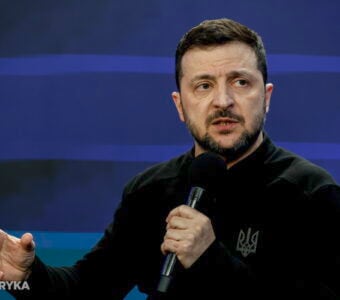Russian companies utilizing foreign technology for experimental ballistic missile Oreshnik – Financial Times

Photo: Russian media
Last month, a Russian experimental ballistic missile called Oreshnik was launched over Ukraine. It seems that Russian companies are utilizing foreign systems to produce these missiles.
The Financial Times analyzes that.
Ukrainian intelligence has identified two Russian weapons engineering institutions, the Moscow Institute of Thermal Engineering and the Sozvezdiye plant, as the creators of the Oreshnik missile. They are currently seeking individuals with knowledge of the metalworking systems of German and Japanese companies.
This illustrates that the Kremlin's military machine remains critically dependent on foreign technologies subject to Western sanctions.
This dependence is especially noticeable in computer numerical control (CNC), a technology vital to the production of the Oreshnik.
The Moscow Institute of Thermal Engineering, which Ukrainian intelligence has linked to Oreshnik, is a prominent institution in advancing Russian solid-fuel ballistic missiles.
In advertisements placed in 2024, the company notes that it "adheres to working with FANUC, SIEMENS, HAIDENHEIN systems."
Fanuc is a Japanese system, and the other two are German. All three of these Western companies are mentioned in advertisements placed by Sozvezdiye.
The publications request "knowledge of CNC systems — Fanuc, Siemens, Haidenhain."
In 2024, eight Chinese companies presented 12 models of CNC devices at a significant Russian exhibition.
According to an analysis by the Economic Security Council of Ukraine, 11 models were equipped with controllers from Japanese or German companies.
A priority for Ukraine's allies is to stop the flow of CNC controllers and equipment to Russia.
Another company involved in producing Oreshnik, Titan-Barricades, recently shared a photo on their website of a worker standing in front of a control unit branded by Fanuc.
In addition, job advertisements show that STAN, a Russian company that designs and manufactures machine tool equipment, also uses Heidenhain equipment.
Export controls have slowed the flow of control units to Russia. However, the FT, citing Russian documents, writes that at least $3 million worth of equipment, including Heidenhain components, has arrived in Russia since the beginning of 2024.
Some buyers are "deeply involved" in the Russian "defense industry."
For reference:
On the morning of November 21, the enemy launched an intercontinental ballistic missile, Kinzhal, and seven Kh-101 cruise missiles over Dnipro, while units of the anti-aircraft missile forces destroyed six Kh-101 missiles. The enterprise and the Rehabilitation Center for People with Disabilities were damaged.
Later that evening, Russian dictator Vladimir Putin claimed that the attack was carried out by their newest hypersonic medium-range missile, Oreshnik.
In addition, during a meeting of the Supreme State Council of the Union State, Russian President Vladimir Putin emphasized Russia's missile potential, using Oreshnik as a symbol demonstration of force. ISW believes this is an information operation by the Kremlin for reflexive control.
Russian Foreign Minister Sergei Lavrov also mentioned the Oreshnik strike on Dnipro on November 21, saying that this shows Moscow's readiness to use "any means" to achieve its goals.
However, according to ISW, these statements do not indicate the presence of new technological advances or notable changes in the Russian missile arsenal.
At the same time, it is worth recalling that according to Vadim Skibitsky, Deputy Head of the Main Intelligence Directorate of the Ministry of Defense, Russia may have up to 10 units of the new ballistic missile.




















































